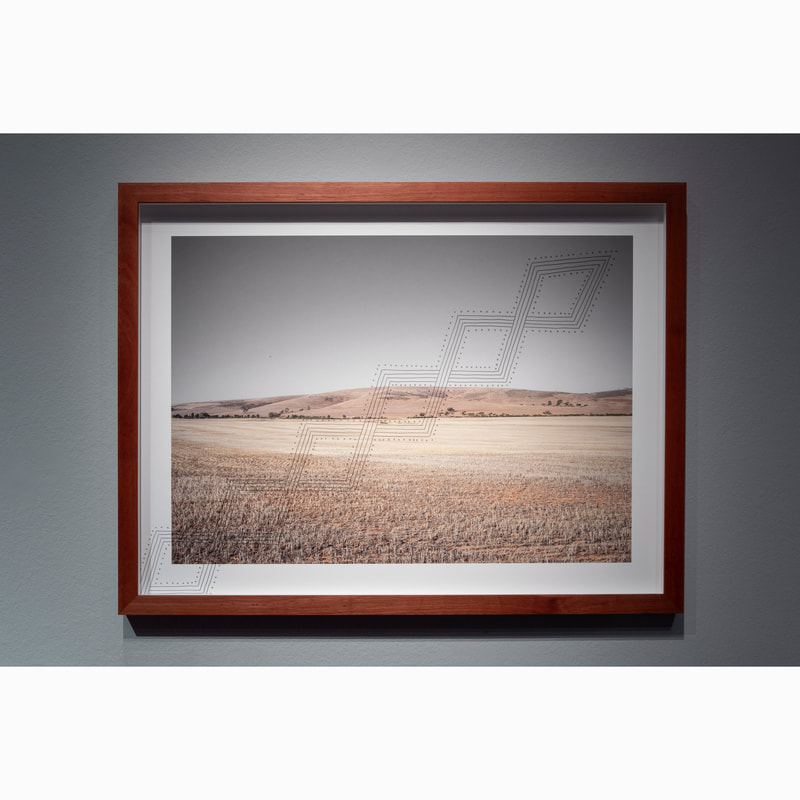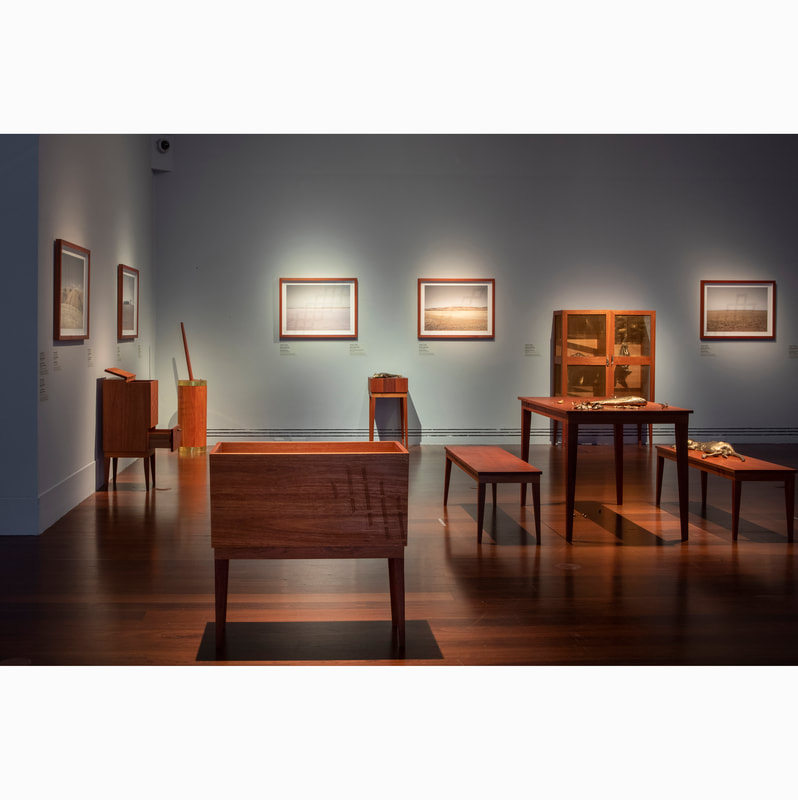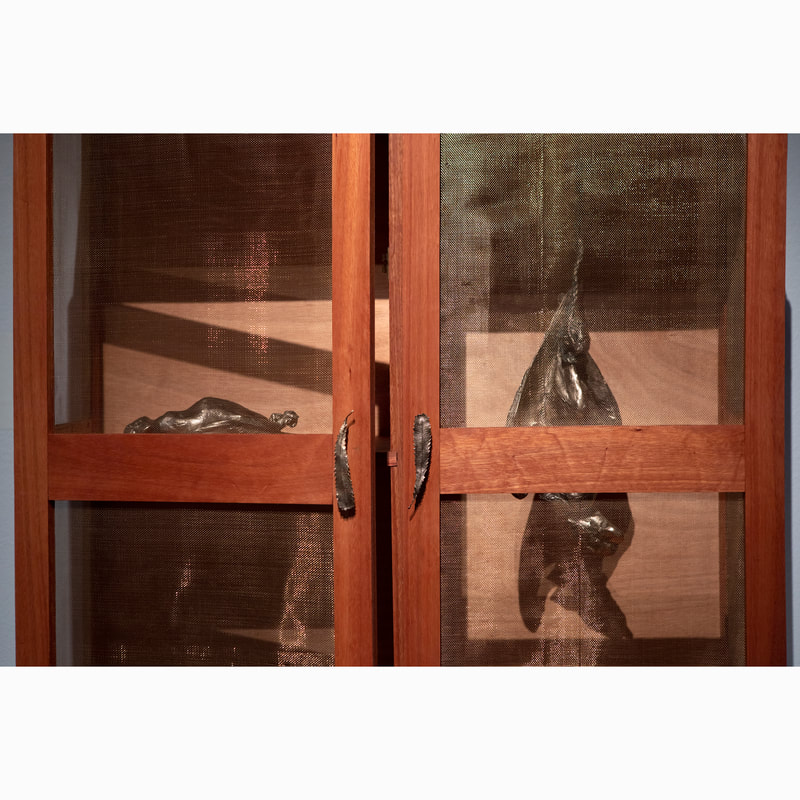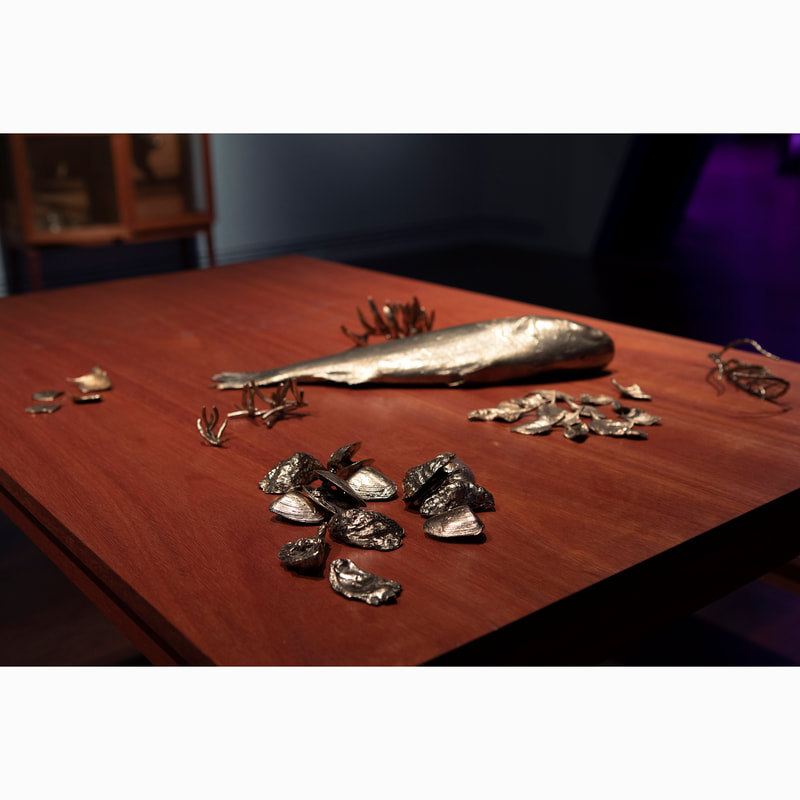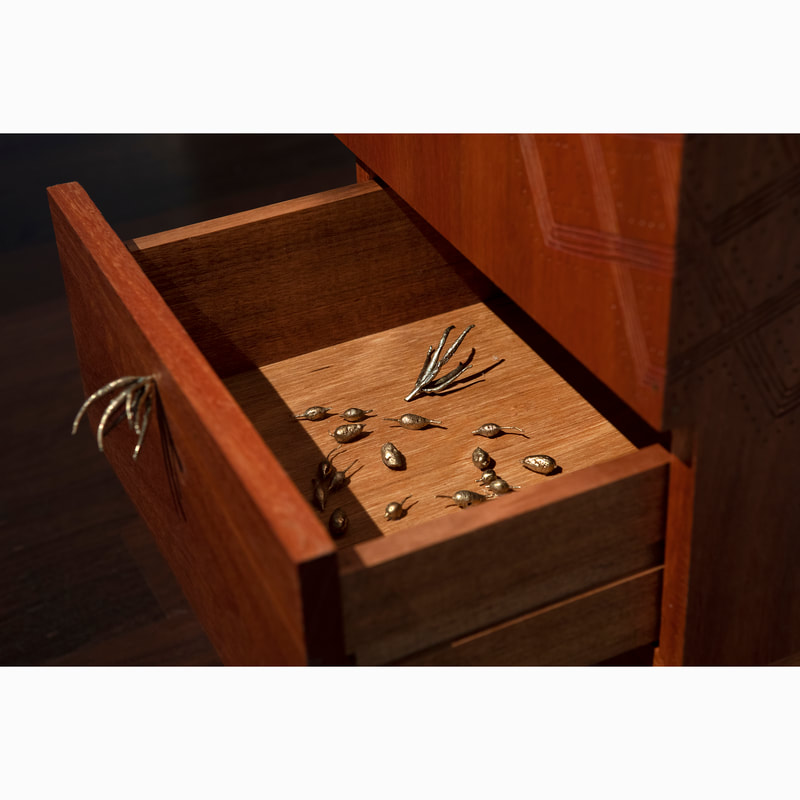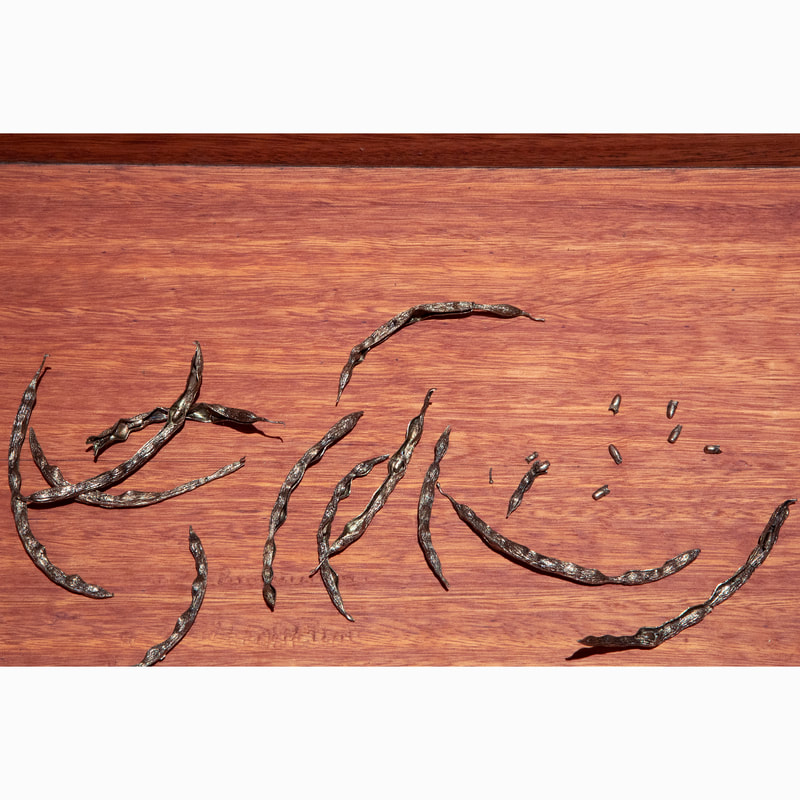Warpulayinthi : Slavery in South Australia
Warpulyainthi is a site specific artwork in collaboration Rebecca Selleck that responds to the 2022 theme, Free/State. South Australia prides itself on being a ‘free state’ where no convicts were settled or used for labour. However, it was a colony built on the slave labour of local Indigenous peoples, including the Kaurna people where the Art Gallery of South Australia sits. Like many First Nations people, my family lineage is marked by this domestic slavery. Our work highlights the use of Aboriginal domestic servitude on European colonist farms during the colonial period in South Australia, and the destruction of intricately managed ecosystems for the damaging monocultural farming practices that are still in use today.
The installation is a colonial kitchen with edible flora and fauna from the Kaurna Nation cast in polished bronze, referencing the forced removal of culture, land, and physical liberty. The furniture is carved into with Kaurna motifs from the Kuri ceremony, representing the absent Kaurna bodies in the space and the continuation of culture through two and a half centuries of oppression.
The Kaurna landscape images accompanying the furniture are overlayed with the same design, as a reassertion of the Kaurna Nation onto stolen lands. The installation is an important reminder of our past and its masked histories, as well as the strength of First Nation’s peoples and cultures.
We show our son the plants to eat, the birds in the trees, and the importance of land and place. This work threads through millennia, these brief centuries of destruction, and into a future that we're all making today.
The installation is a colonial kitchen with edible flora and fauna from the Kaurna Nation cast in polished bronze, referencing the forced removal of culture, land, and physical liberty. The furniture is carved into with Kaurna motifs from the Kuri ceremony, representing the absent Kaurna bodies in the space and the continuation of culture through two and a half centuries of oppression.
The Kaurna landscape images accompanying the furniture are overlayed with the same design, as a reassertion of the Kaurna Nation onto stolen lands. The installation is an important reminder of our past and its masked histories, as well as the strength of First Nation’s peoples and cultures.
We show our son the plants to eat, the birds in the trees, and the importance of land and place. This work threads through millennia, these brief centuries of destruction, and into a future that we're all making today.


